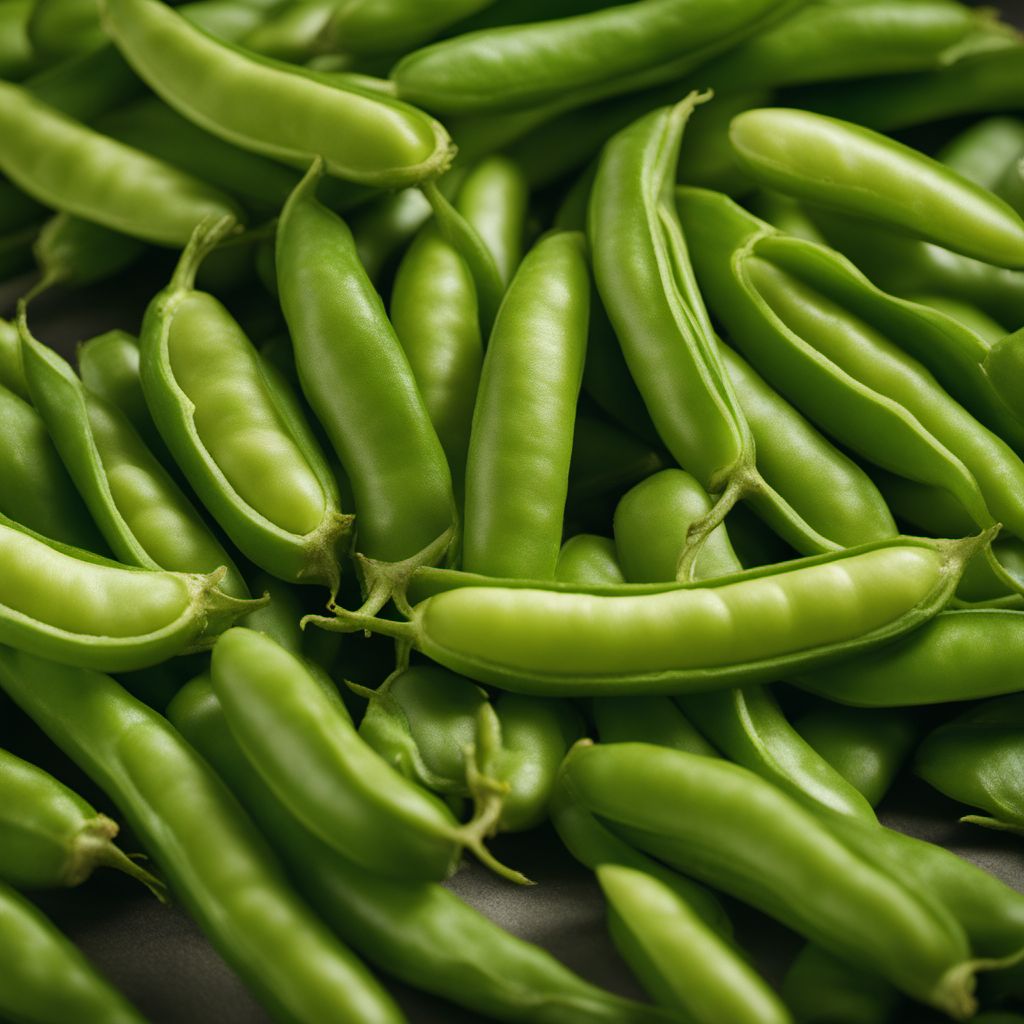
Ingredient
French beans canned
Savory Green Gems
French beans are slender, crisp, and bright green in color with a delicate, grassy flavor. They have a firm texture and are often used in salads, stir-fries, and side dishes.
Origins and history
French beans, native to South America, were introduced to France in the 17th century. They quickly gained popularity in French cuisine and are now cultivated worldwide. They are commonly used in Mediterranean, Asian, and French cooking.
Nutritional information
French beans are low in calories and rich in fiber, vitamins A and C, and potassium. They also provide a good amount of folate and iron.
Allergens
May contain traces of soybeans.
How to select
When selecting canned French beans, look for cans that are free from dents, bulges, or rust. Ensure that the beans are plump, bright green, and not mushy. Opt for cans with intact seals and check the expiration date for freshness.
Storage recommendations
To maintain the freshness of canned French beans, store them in a cool, dry place away from direct sunlight. Once opened, transfer any unused beans to an airtight container and refrigerate for up to 3 days.
How to produce
French beans can be easily grown in a home garden or container. Plant the seeds in well-drained soil, provide support for the vines to climb, and water regularly. Harvest the beans when they are young and tender for the best flavor.
Preparation tips
Canned French beans can be quickly heated and added to salads, stir-fries, or soups. They can also be used as a side dish by sautéing them with garlic and olive oil. For a refreshing salad, toss them with cherry tomatoes, feta cheese, and a lemon vinaigrette.
Substitutions
Fresh green beans, frozen green beans
Culinary uses
French beans are commonly used in salads, stir-fries, casseroles, and side dishes. They can be blanched, steamed, sautéed, or roasted to enhance their flavor and texture.
Availability
Commonly available in Europe, North America, and Asia.
More ingredients from this category
Recipes using French beans canned » Browse all

Bazzoffia Soup
Hearty Italian Bean and Vegetable Soup

Spicy Vegetable Stew with a South African Twist
Fiery Fusion: A Taste of South African Chakalaka

Classic Italian Minestrone Soup
Hearty Vegetable Delight: Classic Italian Minestrone Soup

Pabellón Criollo with a Twist
Vibrant Venezuelan Delight: Pabellón Criollo Reinvented

Radicchio and Cannellini Bean Salad
Bitter-Sweet Harmony: Radicchio and Cannellini Bean Salad

Luxembourgian Chicken and Bean Stew
Savory Delight: Luxembourgian Chicken and Bean Stew

Tex-Mex Couque de Dinant
Spicy Tex-Mex Couque de Dinant: A Fiery Twist on a Belgian Classic

Huevos Rancheros Hungarian Style
Paprika-infused Huevos Rancheros

Fagiolata with Sausage and Vegetables
Hearty Italian Sausage and Vegetable Stew

New Mexican Hot Pot
Spicy and Flavorful New Mexican Hot Pot

New Mexican Coq au Vin
Spicy Chicken Stew with Red Wine and Green Chile

Peruvian Tacu-Tacu with Aji Verde Sauce
Savory Peruvian Rice and Bean Pancakes with Spicy Green Sauce

